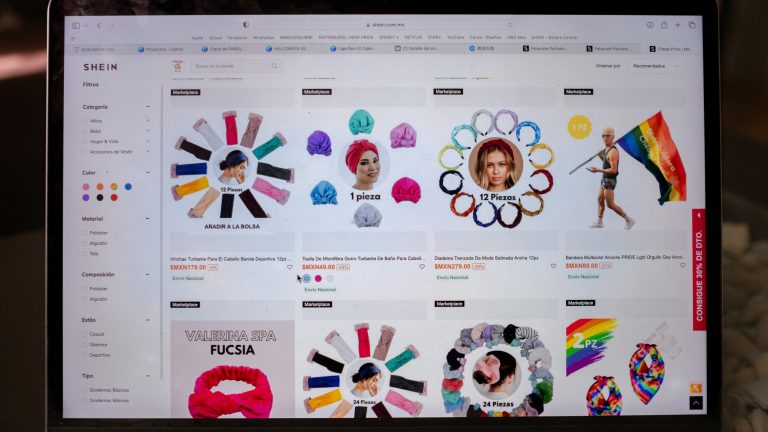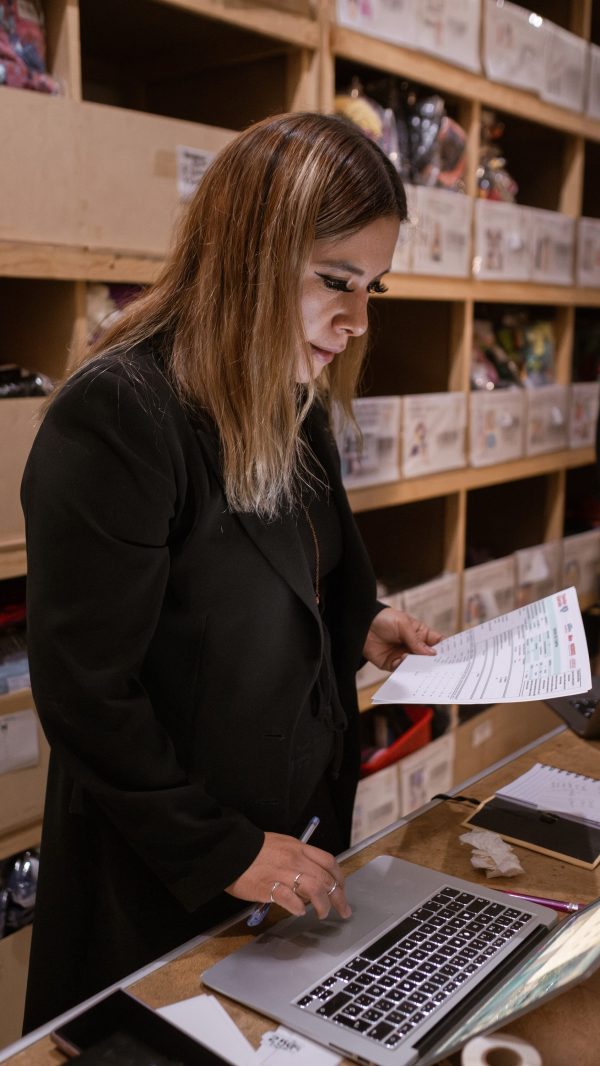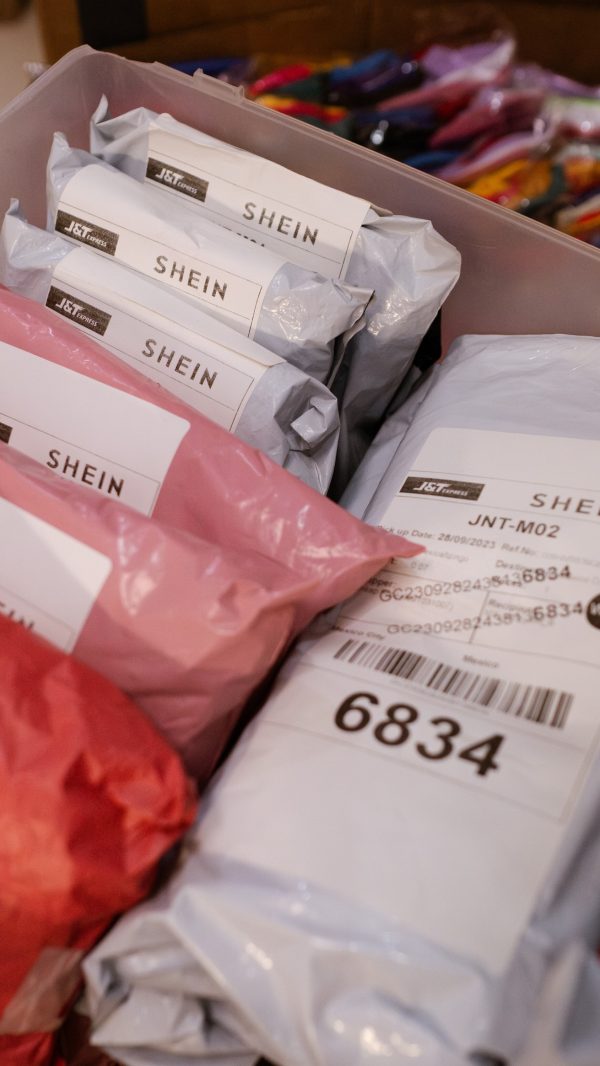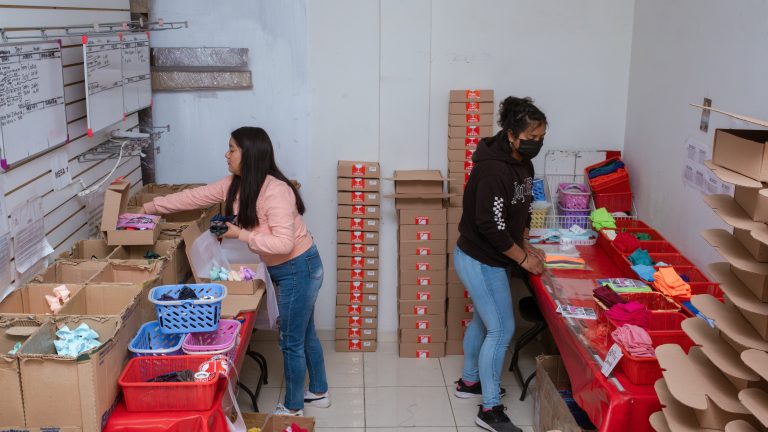In the wake of the Covid-19 pandemic, Liz Monroy became one of the top sellers on the Latin American e-commerce platform MercadoLibre. Her brand, Distribuidora Cheap Price, which mostly sells wholesale hair accessories, was getting around 1,000 orders per month by mid-2021, earning her $15,000 in revenue.
Looking to expand on her success, Monroy turned to other shopping platforms to sell her wares. She first considered Amazon but found the process confusing. “Selling on Amazon is almost as complicated as selling to the government — they ask for many documents and the process to become a seller is very long,” she told Rest of World.
Then, in January, SheinSheinFounded in China in 2008 and headquartered in Singapore, Shein is a fast fashion brand that grew rapidly through exposure on social media.READ MORE got in touch. The China-founded ultrafast-fashion brand was launching a global marketplace, allowing third parties to sell on its platform, and it was approaching sellers to join its Mexican branch. The onboarding process, said Monroy, was much more intuitive. Amazon had stricter requirements around business names and bank accounts, she said, whereas Shein was more accommodating to sellers who were just getting started. The platform had Mexico-based advisors who helped her set up an account, and even offered an initial three-month commission-free period, meaning Shein didn’t take a cut at first. Monroy has sold ,000 worth of goods on Shein’s marketplace since it launched in Mexico this past June. Her business has grown much faster than even on MercadoLibreMercadoLibreFounded in Argentina in 1999, MercadoLibre is an online marketplace that also owns Mercado Pago, a leading payment and financial services app in Mexico and Argentina.READ MORE, she said: “Anything related to fashion sells well on [Shein].”
Courting international sellers is the latest move in a trend of Chinese e-commerce platforms seeking to diversify their supply chains. By moving more of their operations outside of China, they can get products to international customers faster and at lower cost, while also further cementing their image as global brands.
Before launching its marketplaces this year, Shein only sold clothes under its own brand label. Most of these are made in China, but in 2022 the company set up distribution facilities in Poland, the U.S., and Canada. It has also opened factories in Brazil and Turkey, and announced one in India.
A key advantage of diversifying its supply chain in this way is cutting shipping times to the European and North American markets. According to Steve Peters, CEO of supply chain consulting firm Based Consulting, reduced shipping times, in addition to a better return policy, are key if Shein wishes to compete in the U.S. with the likes of Amazon, which has spent many years building a formidable logistics system. “The only way to be able to compete is to be on the ground and offer similar service,” he told Rest of World.
Opening up to international third-party sellers offers a way to shift manufacturing and distribution without a large infrastructure investment. Shein Brasil launched in April; a U.S. branch launched in May. The company currently has plans to expand into Europe.
“Shein really wants to transition and be seen from this type of investment-heavy and operationally intensive model to more of an Amazon marketplace model,” Ivy Yang, a China tech analyst who previously worked at Alibaba, told Rest of World. “It’s lighter and scalable. You shift from having to handle everything yourself to a model where you can earn service fees.”
Shein isn’t the only Chinese shopping platform courting sellers outside China. Temu is also expanding its platform to welcome U.S. sellers. TikTok Shop, meanwhile, has a strong presence in Southeast Asia, and started rolling out to sellers in the U.S. this year.
“You shift from having to handle everything yourself to a model where you can earn service fees.”
On Shein, regional marketplace sellers are distinguished from cross-border sellers based in China by a “marketplace” label. On the Mexico and Brazil marketplaces, products are also labeled “Envio Nacional,” indicating they can be only shipped locally. In July, Shein said in a letter to investors that it had attracted 6,000 active marketplace sellers in Brazil, the first country in which it launched.
Tania Ocampo runs Ferso Industrias, a company that specializes in cleaning and beauty products made with Mexican ingredients. She told Rest of World she accepted an invitation to join Shein without hesitation, owing to its strong positioning in the e-commerce space. “Jumping on Shein’s existing brand reputation has been part of our sales strategy to advertise ourselves online,” she said.
Shein’s Chinese roots were a draw for her, Ocampo said — and a potential advantage over competitors such as MercadoLibre or Amazon. She hoped the platform would eventually give Ferso Industrias a way to reach Asian markets. “The fact that it’s a Chinese company is a larger opportunity for us in the long run,” she said.
Shein’s streamlined logistics were a major part of its appeal to local sellers, Yadira Alcántara Monroy, head of commercial relationships for the government of the state of Mexico, told Rest of World. In Mexico, Shein has partnered with J&T Express, a logistics company founded in Indonesia, which picks up items directly from the seller’s location for delivery. In contrast, MercadoLibre requires sellers outside of the city center to send each order to its warehouses and incur fees for extended warehousing.
Monroy, the hair accessory seller, said Shein’s innovative delivery method saved costs. After the commission-free period, she paid fees of 10% plus shipping for packages sold on Shein, compared to 19% plus shipping on MercadoLibre.
But Shein isn’t an option for everyone in Mexico. One major obstacle, said Alcántara Monroy, is that sellers who wish to join the platform must be registered with the local authority, and many vendors in the state of Mexico operate informally. Shein also requires sellers to hold a certain number of products in stock before they can join.
While marketplace sellers are required to register their business locally and have stock inside the country, this doesn’t necessarily mean that the goods are produced locally. Several sellers in Mexico City told Rest of World they sourced their goods from China. That means Mexican vendors are buying items from platforms like AliExpress, or directly from Chinese manufacturers, and then reselling them in the local market at a markup.
TikTok Shop, which is tied to the social media app, exclusively hosts third-party sellers. It launched in Indonesia and the U.K. in 2021, and has since expanded to several more Southeast Asian countries (although it closed down in Indonesia in October after the government said it would ban it). It launched in the U.S. in September.
“A lot of brands and sellers are now on TikTok, they get a lot of kickbacks,” Paul Harvey, founder and owner of Rankster, a U.K.-based company that makes TikTok ad campaigns, told Rest of World. For example, TikTok offered to subsidize discounts on products if sellers participated in a Black Friday promotion.
“Amazon’s mission statement is the most customer-centric platform in the world.”
For some sellers, the new platforms offer an alternative in countries where Amazon is dominant. Steven Pope, who currently sells products on Amazon from his U.S. soap brand Age of Sage, is hoping to start selling on TikTok. Rising advertising costs on Amazon, he told Rest of World, made platforms like TikTok more appealing. “Amazon’s mission statement is the most customer-centric platform in the world. Notice the word ‘customer,’ not sellers,” Pope said. “So these programs — TikTok, or Temu, whatever it is — if they treat sellers better, the sellers would flock over to those platforms.”

For the platforms, attracting local sellers has benefits beyond just growing their footprint. According to Aidan Chau, researcher at nonprofit China Labour Bulletin in Hong Kong, one reason Chinese companies are working to move their operations is that some countries are tightening up customs duties and taxes for Chinese sellers.
A U.S. congressional report released in June estimated that Shein and Temu were responsible for over 30% of packages shipped daily to the U.S. under the “de minimis” rule, which allows goods valued under $800 to enter duty-free and with limited customs checks.
Also in June, U.S. lawmakers introduced a bill to bar Chinese exports from entering the country via the de minimis channel. One senator said the current customs law allowed Chinese companies to import “cheap, counterfeit goods that undercut American manufacturers and traffic drugs into our communities.” If passed, this move would significantly impact the profit margins of Shein and Temu in the U.S. market, said Chau.
Other countries are also considering or implementing similar policies. In August, Brazil started imposing a 17% state tax on cross-border parcels from international sellers on platforms such as Amazon, Shopee, AliExpress, and Shein. This tax applies even on parcels valued at less than $50, which are exempt from customs duties.
One Shanghai-based Shopee seller, who asked to be identified only by her family name Xu for privacy reasons, told Rest of World the policy had dealt a devastating blow to sellers in China targeting the Brazilian market. Many sellers in her circle had lost hundreds of thousands of yuan in recent months due to customers returning products, she said, unsatisfied with the high taxes they had to pay. According to Xu’s records, the percentage of her packages that had been inspected by Brazilian customs had risen from 3% to around 30% in the past few months. Like many sellers on Shopee, Xu closed her Brazil store.
“Migrating part of the supply chain is merely a response to U.S. political restrictions.”
Shein responded to the change by offering to cover the tax for its customers on purchases up to $50. It’s unclear how long the platform will help bear the cost, however. Shein did not respond to Rest of World’s request for comment on this question by the time of publication.
Along with the practicalities of reduced shipping times and tariffs, Chinese e-commerce platforms looking to regionalize their supply chains may be seeking political benefits. Shein, Temu, and TikTok Shop do not sell to Chinese customers and have been eager to position themselves as global companies. Shein relocated its headquarters from Nanjing to Singapore in 2021. TikTok, which is owned by Chinese company ByteDance, has its main offices in Singapore and Los Angeles. And Temu, which is owned by Chinese e-commerce giant PDD Holdings, is headquartered in Boston.

“The hope is that it would take away the emphasis on their China affiliation and focus more on the business they’re trying to build,” said Yang, the analyst. Around the world, Chinese platforms are especially scrutinized for issues such as privacy and intellectual property violations, she said. “These are the issues that they will be judged on [in] harsher terms because of their China affiliation.”
The U.S. government has also highlighted the risk of Uyghur forced labor contributing to the supply chains of platforms like Temu and Shein; moving manufacturing outside of China may alleviate these concerns. An interim congressional report singled out Temu, in particular, citing its reliance on Chinese suppliers and lack of auditing. It stated that “American consumers should know that there is an extremely high risk that Temu’s supply chains are contaminated with forced labor.” Temu and Shein both told Rest of World they had “zero tolerance” for forced labor.
Li Qiang, founder and executive director of China Labor Watch, a U.S.-based nonprofit dedicated to enhancing supply chain transparency and labor conditions in China, told Rest of World the attempts by these platforms to diversify their global supply chains are largely “symbolic and decorative.” He perceives this as a strategy to protect their profits as the U.S. and other countries progressively intensify trade restrictions against China.
“This level of brutal competition [among suppliers for Shein and Pinduoduo] can only exist in China,” Li said. “Migrating part of the supply chain is merely a response to U.S. political restrictions.”
Some sellers, too, have reservations. Isaac Presburger, director of sales at Preslow, a garment manufacturer based in Mexico City, told Rest of World he was concerned about how Chinese platforms handled tariffs and the prospect of unfair competition. “Competition is always good for the market. But it’s a very big if. If they are playing by the rules, they’re welcome. If they’re not, they’re not good, because they disrupt the entire market,” he said.
Monroy of Distribuidora Cheap Price said that some Mexican sellers might struggle to compete price-wise with their Chinese counterparts. “It can be a very competitive platform for companies that aren’t able to produce cheap products. Chinese sellers are super, super cheap.” Her hair products sell for 12 pesos (around 66 cents) per item on Shein.
Yang, the communications consultant, said Chinese e-commerce platforms need to approach local markets sensitively, as genuine localization would require more than just downplaying their Chinese roots. “It’s not just about hiring local executives, changing your headquarter to Dublin,” she said. “It’s about actually having a deep sense of respect and building a kind of mentality to thrive in the local market.”











